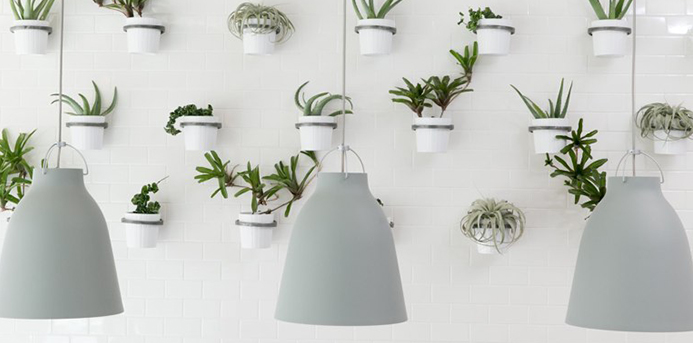In recent years, there has been an explosion of lofty landscapes sprouting from every vertical surface, from the fences enclosing tiny urban lots to the interior walls of chic restaurants. Vertical gardens and living walls have unique benefits, not the least of which is efficient utilization of precious space. For backyard-challenged urbanites, a vertical growing system can be the perfect solution. But even if you’ve got acreage to spare, greening up wall space can provide you with a verdant Eden all your own—outdoors or in. There are dozens of ways to garden vertically. To help us sort it all out, we asked three eco-experts to give us the lay of the land.
Live with a Living Wall
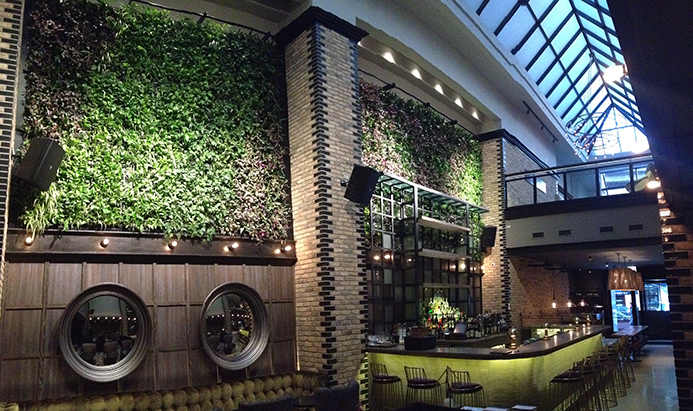
Molly Meyer, president of Omni Ecosystems, a company that designs and installs living walls and green roofs, says that a living wall in your home can be beneficial to your health and well being. “[They] reduce noise and improve air quality and…can even function as living works of art.”
To reap all of these benefits indoors, you’ll need to invest in a fairly complex system. “A good living wall system,” Meyer says, “should have automated irrigation and drainage, a water detection system, ample rooting space for plants [and] access for replacing plants if needed…”
To achieve that lush carpet of greenery indoors, Meyer recommends low-light tropicals like pothos, spider plant and heart-leaf philodendron. With these plants, Meyer says, “It is best to avoid direct sunlight,” but notes, “light that is too low can lead to lackluster growth. There is a sweet spot.”
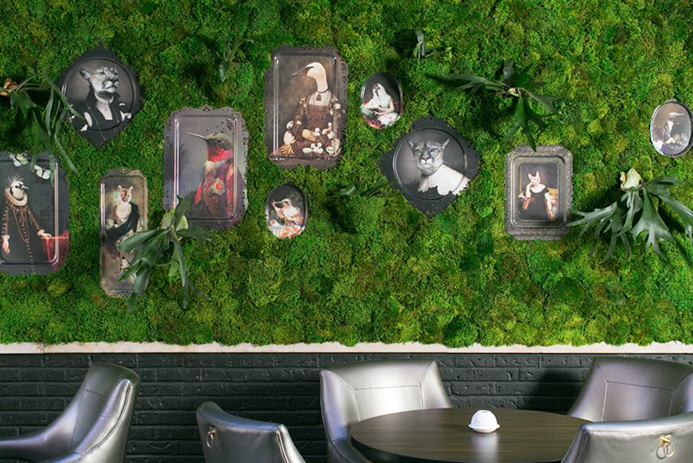
As with any garden, there’s also regular maintenance to consider: watering, dusting, pruning, replacing the occasional plant and monitoring for pests.
“A living wall is a living thing,” says Meyer, “like getting a dog…it requires ongoing care.” That being said, if you’re ready to make the commitment, the results can be breathtaking.
Vertical Green Spaces

Heather Shouse, owner of landscape design company Bottle & Branch, created the stunning installations at the restaurants Boka and Belly Q. She devised a clever alternative to the demanding living wall. Her vertical green spaces often utilize preserved moss, which maintains its color and texture, but no longer requires regular upkeep. “I use it like a wall treatment,” Shouse says. With the moss as a striking backdrop, Shouse likes to incorporate potted plants such as staghorn ferns, which can be fixed directly to the wall using plant pot rings. “It makes sense to do something that incorporates a little bit of preserved [material] and a little something living,” she says.
To keep the living plants happy, Shouse suggests setting a smaller pot with drainage on a riser inside a solid-bottomed pot. “Ikea has good ones,” she says. You can also forgo the moss altogether and create an artful arrangement of pot rings on your wall. “Space them out creatively,” says Shouse, “and you can make a big impact.”
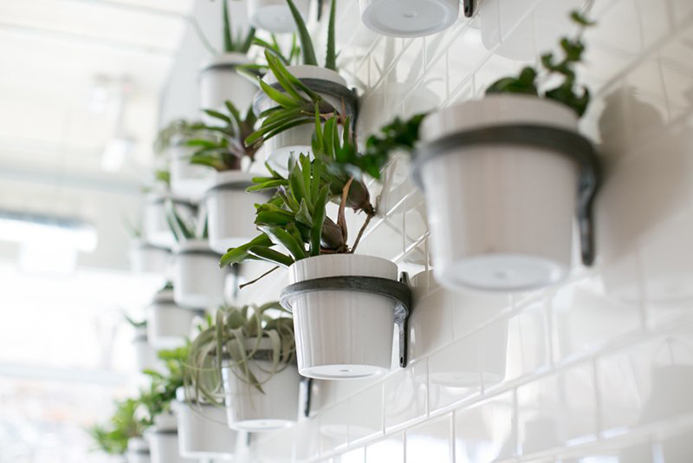
Growing Dinner Inside

If you’re interested in growing edible plants, Sara Gasbarra, owner of Verdura, which specializes in restaurant garden design, says to take it outside. According to Gasbarra, vegetables need six to eight hours of direct sunlight daily, plus proper irrigation and humidity levels—conditions that she says can be difficult to mimic indoors. And unlike preserved moss or ornamental plant varieties, “vegetables have a life cycle,” Gasbarra says, “they don’t always look pretty.”
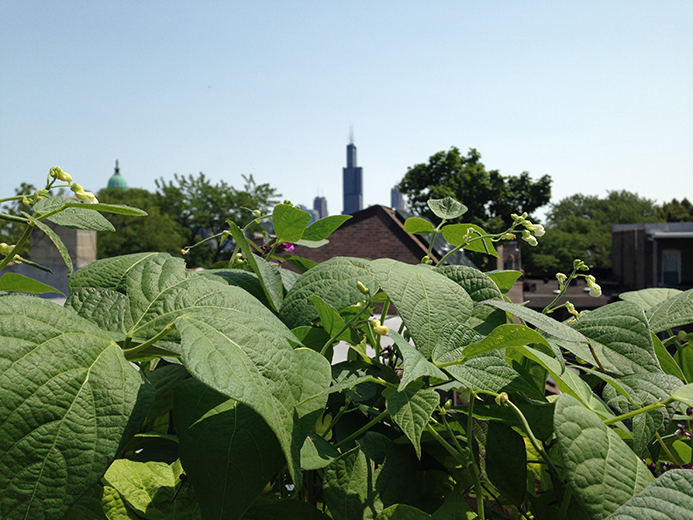
To grow edible plants vertically, you’ll want to choose vegetables that don’t require a lot of soil depth. Plants well suited to a wall system include herbs, baby greens and lettuces and edible flowers. “You can even do bush habit string beans!” she says. “Avoid tomatoes, root crops and larger plant varieties,” warns Gasbarra. “If you just want to snip some herbs and have something beautiful, then a wall system is perfect.” Gasbarra suggests starting simple. Try a prefabricated system like Wooly Pockets or a DIY solution. You can also mimic the effect of a living wall system by attaching containers to a wall or fence (pot racks work for this application as well). “This still allows for traditional growing methods,” Gasbarra says.
Now get growing!
